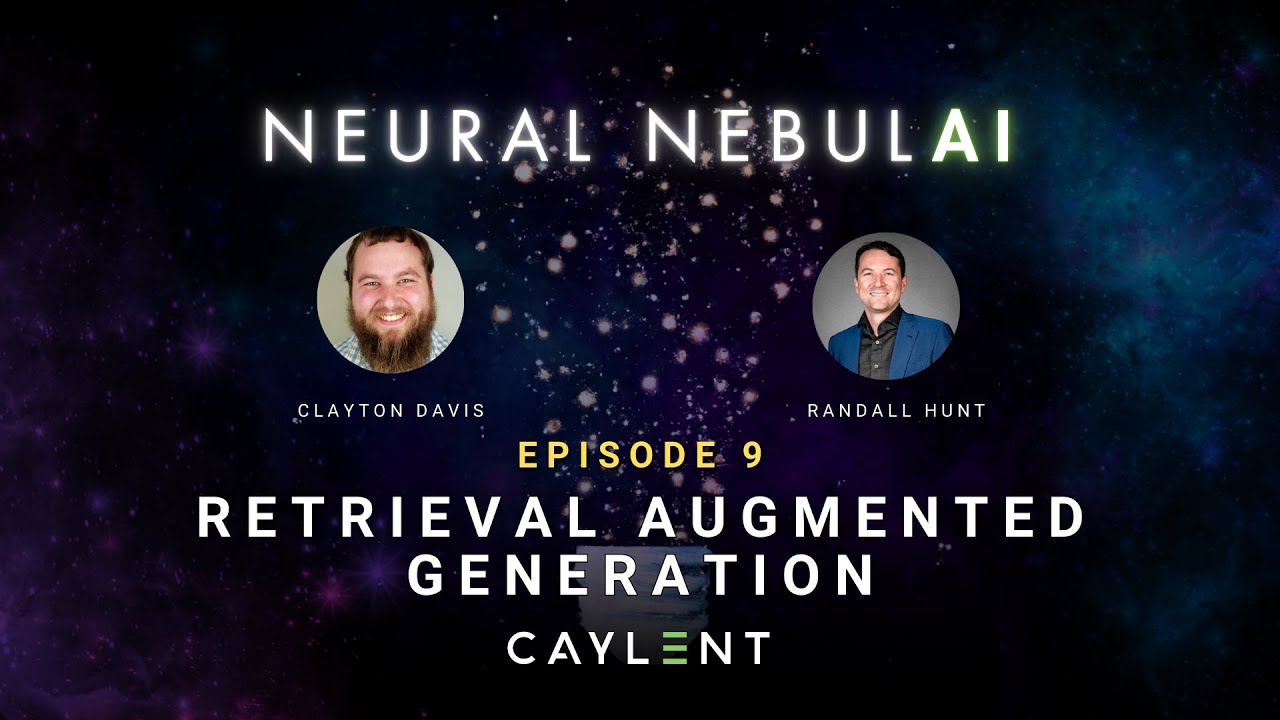Build your own RAG (retrieval augmented generation) AI Chatbot using Python | Simple walkthrough
Summary
TLDRThis video explains the concept of Retrieval-Augmented Generation (RAG), a technique in Natural Language Processing (NLP) that enhances the relevance and accuracy of large language models like GPT. RAG combines three key components: **retrieval**, where relevant external data is fetched from vector databases; **augmentation**, where the retrieved information enriches the original query; and **generation**, where the model generates a more accurate response. The video walks through a practical example of implementing RAG with PDFs and vector databases, demonstrating how this method reduces hallucinations and improves response quality for chatbots and enterprise AI systems.
Takeaways
- 😀 RAG (Retrieval-Augmented Generation) is a powerful method to enhance the relevance and quality of responses from language models by integrating external knowledge sources.
- 😀 RAG involves three main steps: generation, retrieval, and augmentation, which work together to provide more accurate and relevant answers.
- 😀 Generation refers to the language model's ability to generate responses to queries, as demonstrated in chatbots like ChatGPT.
- 😀 Retrieval is the process of extracting relevant context or information from external data sources, such as vector databases (e.g., Pinecone, Weaviate), which store indexed content.
- 😀 Augmentation improves the generated response by adding relevant context retrieved from external sources into the prompt, ensuring more informed and precise answers.
- 😀 RAG is particularly effective for overcoming issues like hallucination, where language models might generate irrelevant or incorrect information.
- 😀 The RAG framework uses similarity searches within a vector database to find the most relevant context for the user’s query.
- 😀 The process of augmenting the prompt with retrieved data allows the language model to provide responses that are more aligned with the query, increasing response accuracy.
- 😀 Technical implementation of RAG involves using libraries like LangChain and tools for vector indexing and retrieval, such as Pinecone or Weaviate, to store and search external knowledge bases.
- 😀 By indexing files like PDFs into a vector database, RAG allows chatbots and other AI products to continuously pull relevant data and offer up-to-date responses.
- 😀 The video demonstrates RAG's implementation through a practical example, where a user uploads a PDF file, which is indexed and used for retrieval to answer queries with enhanced relevance.
Q & A
What is Retrieval-Augmented Generation (RAG)?
-RAG is a method that combines retrieval and generation techniques to enhance the performance of large language models (LLMs). It allows LLMs to access external knowledge bases, retrieve relevant information, and generate more accurate and contextually relevant responses.
How does RAG improve the quality of responses from large language models?
-RAG improves response quality by integrating up-to-date, relevant external data into the model's generation process. This reduces hallucinations and makes the model's output more accurate and grounded in real information.
What is the 'retrieval' part of RAG?
-The 'retrieval' part refers to fetching relevant information from external sources, like databases or indexed documents. The system searches for similar queries or passages from these sources and retrieves the most relevant ones for generating a response.
What role does a vector database play in RAG?
-A vector database stores indexed data, like PDF files, in a format that allows efficient similarity searches. This is crucial for retrieving relevant information from large datasets, which is then used to augment the model's prompts.
What does 'augmentation' mean in the context of RAG?
-Augmentation in RAG involves enhancing the original query or prompt with additional context or relevant information retrieved from the external knowledge base. This enriched prompt helps the model generate a more accurate and relevant response.
Can you explain the process of 'prompt augmentation' in RAG?
-Prompt augmentation involves adding retrieved context, such as relevant sentences or metadata (like file names or page numbers), to the initial user query. This ensures the language model generates a response based on enriched, contextually relevant information.
How does RAG prevent hallucinations in generated responses?
-RAG prevents hallucinations by enriching the model's input prompt with real, relevant data from external sources, reducing the chances of the model generating incorrect or irrelevant information that it might otherwise 'hallucinate.'
What is the significance of using a PDF file in the RAG example provided in the video?
-In the video, a PDF file serves as an external knowledge source. The PDF is uploaded, parsed, and indexed in a vector database, allowing the system to retrieve relevant information from it to augment prompts and generate more accurate responses.
Why is it important to store a vector database in session state?
-Storing the vector database in session state helps avoid reindexing the data every time a query is made. This reduces the computational cost and ensures that the system only performs similarity searches rather than redoing the entire indexing process.
What is the final step in the RAG process after prompt augmentation?
-The final step is passing the augmented prompt to the language model (e.g., GPT-3.5) for generation. The model processes the enhanced prompt and generates a response that is more relevant and accurate based on the additional context.
Outlines

This section is available to paid users only. Please upgrade to access this part.
Upgrade NowMindmap

This section is available to paid users only. Please upgrade to access this part.
Upgrade NowKeywords

This section is available to paid users only. Please upgrade to access this part.
Upgrade NowHighlights

This section is available to paid users only. Please upgrade to access this part.
Upgrade NowTranscripts

This section is available to paid users only. Please upgrade to access this part.
Upgrade NowBrowse More Related Video
5.0 / 5 (0 votes)





